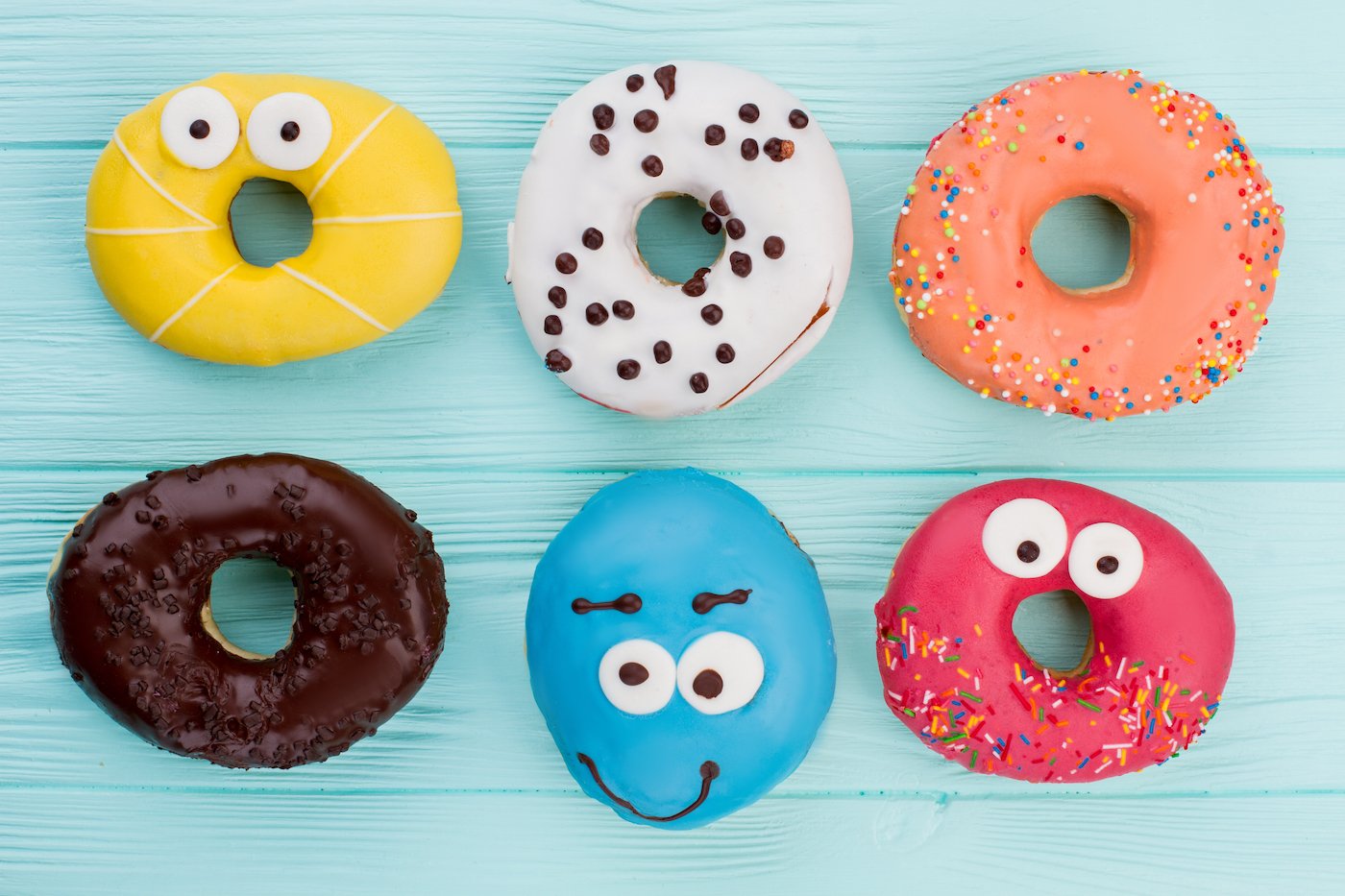What is ‘choice overload’ and how it affects your website sales

Let’s face it, we are inundated with choices, whether we’re shopping for products, exploring new concepts, or seeking information online.
It might seem easy to assume that offering more options on your website would cater to a broader audience and increase engagement. However, more choices can actually have a negative effect on sales. This is where the concept of "choice overload" comes into play—a phenomenon that can significantly impact how users interact with your website.
Understanding Choice Overload
Choice overload occurs when website users are presented with too many options, leading to a state of indecision and frustration.
While the availability of choices can be appealing to clients, too many options can overwhelm users, making it difficult for them to make a decision. This is especially relevant in website design, where the goal is often to guide users smoothly toward completing a specific action, whether it’s making a purchase, signing up for a newsletter, or simply finding relevant information.
The Impact of Choice Overload on Your Website
When a visitor lands on your website, they usually have a clear objective—whether it’s finding a product, gathering information, or completing a transaction. However, if your website presents them with an overwhelming number of options, it can lead to several negative consequences:
Decision Paralysis: When faced with too many choices, users may become paralysed by indecision. Instead of carefully weighing their options, they might choose to take no action at all. This is a common outcome of choice overload, where the cognitive effort required to make a decision becomes too great, leading users to abandon the task entirely.
User Frustration: An excess of options can also lead to confusion and frustration. When users struggle to find what they’re looking for, they may become irritated and leave your site with a negative perception of your brand. This frustration can be exacerbated by poor navigation, unclear labels, or an overwhelming number of product variations.
Lower Conversion Rates: Choice overload can directly impact your bottom line by reducing conversion rates. If users are unable to make a decision due to an overwhelming number of options, they are less likely to complete a purchase or engage with your site in meaningful ways. This not only affects your sales but can also diminish the overall user experience.
How to Protect Against Choice Overload
To mitigate the effects of choice overload, it’s essential to streamline your website’s design and navigation. Here are a few strategies to consider:
Prioritise Key Actions: Identify the most critical actions you want users to take on your website, such as making a purchase, signing up for a service, or contacting your team. Focus on these actions and minimise distractions that could divert users’ attention.
Limit Options: Instead of presenting users with an overwhelming number of choices, try to curate your offerings. For example, you can highlight best-sellers, feature popular services, or offer recommended options to guide users toward a decision.
Use Clear CTAs: Your calls-to-action should be clear, concise, and prominently displayed. Avoid cluttering your pages with multiple competing CTAs, which can confuse users and dilute the effectiveness of each one.
Implement Filters and Search Functions: Help users narrow down their choices by providing filtering options or an effective search function. This can reduce the cognitive load by allowing users to focus only on the most relevant options.
While offering a variety of choices can seem like a way to cater to all potential customers, too many options can lead to choice overload, causing decision paralysis, frustration, and lower conversion rates.
By understanding the impact of choice overload and implementing strategies to reduce it, you can create a more streamlined, user-friendly website that encourages engagement and drives conversions. Simplifying the user experience not only enhances satisfaction but also strengthens your brand's ability to connect with its audience effectively.
You might also like to read:
Branding is much more than just a logo or a catchy slogan. It is the essence of your business, encompassing everything from your visual identity to the way you communicate with your customers.
At Haus of Hiatus, we believe that effective branding is the key to building a strong, recognisable, and trustworthy business. This is achieved through the principles of associative learning, the law of least mental effort, and the mere exposure effect.
In today's dynamic marketplace, the most resilient companies continually seek innovative strategies to expand their reach and enhance their brand portfolio.
One such strategy we often recommend in our marketing audits, is the creation of satellite brands. But what exactly is a satellite brand, and how can it benefit your parent company?
If you’ve not heard of a satellite brand, it’s an extension or offshoot of a larger, more established parent brand. While it operates with a degree of autonomy, it remains closely associated with the main brand, benefiting from its resources, reputation, and market presence.
You may not realise it, but at the core of your website and brand is a 'design system,' a method of understanding that helps to harness principles like the Aesthetic-Usability Effect, Jakob's Law, Law of Least Mental Effort, Law of Similarity, Serial Position Effect, and the Von Restorff Effect.
In this article, we’ll delve deeper into how these psychological and neurological phenomena intersect with design systems, reshaping the landscape of your website and brand experiences.
In cognitive psychology, "chunking" refers to the process of breaking down information into smaller, more manageable units – so that they can be recalled quicker.
This concept has significant implications for website design and user experience (UX), as it directly impacts how visitors perceive and interact with your online content.
“One of the most common pitfalls we've observed is the indiscriminate dumping of text onto the website without proper consideration for its relevance or impact.”
If you didn’t realise, your website is the digital storefront of your brand, the virtual gateway through which potential customers interact with your business.
It's a powerful tool for conveying your brand message, generating leads, and driving conversions. However, entrusting the user experience design of your website to lazy or inexperienced marketers can have disastrous consequences.
In today's competitive market landscape, a brand refresh is often the key to staying relevant and resonating with evolving consumer preferences.
However, the success of such an endeavour hinges on more than just a fresh coat of paint; it requires strategic planning, thoughtful execution, and perhaps most importantly, the active involvement of all stakeholders from the outset.
Designing a colour palette for a website is a crucial aspect of creating a visually appealing and cohesive brand experience.
One effective approach to achieving balance and harmony in colour selection is the 60/30/10 rule. This rule dictates that 60% of the colour scheme should be the main colour, 30% the secondary colour, and 10% the accent colour. Here's a detailed guide on how to implement this rule effectively:
Brand signposting is a critical part of a business's visual identity.
But what is it?
It’s all the elements that communicates the company's market position and target customer - that is the logo, taglines, colour palettes, and design systems, to name a few of the main components.
However, striking the right balance in brand signposting is essential, as too much or too little can both pose challenges for start-up and scale-up businesses.
When we’re working with ambitious scale-ups striving to increase their market position by communicating a higher level of professionalism, we naturally come around to the idea of rebranding as a method to get to that next level.
But it’s not straight forward, especially for companies that started off as single-person entity without a clear idea of whether the idea would work.
This is where a change in personality comes in.
In the ever-evolving realm of digital design, the concept of skeuomorphism has emerged as a key principle shaping user experiences. But what exactly is skeuomorphism, and how should it influence your approach to crafting digital interfaces?
Brand position is a crucial aspect of establishing a strong market presence and forging meaningful connections with consumers – that much is obvious. If your branding causes confusion or you’re sending more attention to your competitors, then it’s going to hurt your company’s bottom line.
So how do you find your unique and defensible market position?
Identify and catalogue the semiotic signs of it.
In the world of branding and design, making your product or message stand out is a perpetual challenge.
The Von Restorff Effect, also known as the Isolation Effect, is a psychological principle that can be a game-changer for brands seeking to capture the attention of their audience. This intriguing phenomenon offers insights into human cognition and memory, making it a powerful tool for marketers and designers alike.
But how does it help develop your brand? Here’s our thoughts:
Traditionally, brand ambassadors were often high-profile celebrities or influencers, but a new paradigm has emerged. Your own staff, the people who work behind the scenes, are now recognised as some of the most powerful and authentic brand ambassadors a company can have.
When you think about it, it makes perfect sense. Your employees are the heart and soul of your organisation. They interact with customers, collaborate with partners, and shape the culture of your company.
Your brand is your identity, that intangible power to stir emotions in peoples’ minds.
It's the sum total of all the exposures, impressions, interactions, and experiences people have with your brand. When your brand is well-established, it becomes a household name, making it easier for customers to choose your products or services over competitors'.
But building a brand is not just about having a snappy logo or a catchy tagline; it's about creating brand awareness and perception that is so pervasive that your brand seems to enter the room before you even get to the front door. If you want a brand to be successful, you have to make sure people know who you are.
In today's ever-evolving business landscape, the fate of many brands lies in a precarious balance. Some brands thrive and flourish, while others wither away into obscurity, becoming what we call "graveyard brands." These are brands that have failed to adapt to changing consumer preferences, technological advancements, or market dynamics.
To avoid becoming a graveyard brand, companies must adopt a proactive approach to brand design and growth marketing.
Whenever we’re designing a brand or running a rebranding project, a profound Japanese philosophy guides our approach: Genchi Genbutsu – which translates as "go and see for yourself" or "go to the source,".
This principle is the cornerstone of how we reshape and redefine brands. Originally pioneered by Toyota as their production system, Genchi Genbutsu transcends industries, offering a transformative methodology that goes beyond the surface to unearth the essence of your brand by seeing and experiencing the culture of your organisation. We find the best way to communicate it, is to first experience it!
We often get asked what the difference is between a graphic designer and a brand designer, so we decided to answer it on our website.
Whilst they might sound very similar, they are actually hugely different in function:
Building a compelling website is crucial for an ocean rowing team embarking on a 3000-mile journey across the Atlantic. By choosing a memorable domain name, selecting a suitable platform like Squarespace, customising the design, creating essential pages, sharing expedition information, maintaining an active blog, integrating social media, implementing donation options, optimising for SEO, testing and refining, promoting the website, and tracking analytics, the team can engage their audience, attract sponsors, and provide a central hub for updates and information. Ultimately, a well-managed website reflects the spirit and goals of the expedition, ensuring its success and impact.
Discover the secrets to designing an impactful logo for your expedition!
From understanding your mission to selecting the perfect typography and colours, this guide provides step-by-step instructions.
Build a strong brand identity that captivates investors and attracts sponsors. Unleash your expedition's potential with a memorable logo that embodies your values and excites your audience. Don't miss out on this essential resource!
Embarking on the Talisker Whiskey Atlantic challenge but feeling lost about where to begin? Don't worry, we've got you covered!
Before you start chasing investors or shopping for gear, focus on one crucial aspect: your team's branding. Discover why a strong brand identity is essential for ocean rowing teams and follow our step-by-step guide to designing a captivating brand that attracts investors and sponsors and sets you apart from the competition.
About the Author: A former Royal Marines officer and advisor to the BBC, Chris has travelled in over 60 countries, is a fellow of the Royal Geographical Society, a Guinness World Record holder for rowing over 3500 miles across the Atlantic Ocean, a Marathon des Sables finisher, and is the founder of ‘Haus of Hiatus’, a website design and branding studio that designs and amplifies start-ups, scale-ups and special projects around the world.
He has worked with Hollywood actors, world–renowned musical artists and TV personalities, and is delighted to have had his work featured by the United Nations, Red Bull, BBC, and even seen at the South Pole!



















